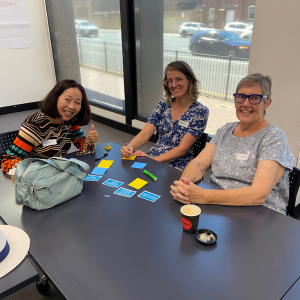
Dean of Swinburne Law School Professor Dan Hunter’s book tells the story of intellectual property laws through historically significant and recognisable objects.
What do light bulbs, champagne, wi-fi, Barbie and the Coca-Cola bottle all have in common? Their creation and existence is inextricably linked to intellectual property (IP) laws.
These objects also all featured in Dean of Swinburne Law School, Professor Dan Hunter’s new book ‘A History of Intellectual Property in 50 Objects’, published by Cambridge University Press.
Inspired by the British Museum’s ‘A History of the World in 100 Objects’, Professor Hunter’s book tells the story of IP laws through historically significant and recognisable objects.
Professor Hunter had the idea to write a book about IP several years ago, but knew it needed to be more than just a textbook that explained the origin of the laws and how they work.
“IP is a really amazing concept and set of laws, but it’s really boring when you talk about these laws like copyright, trademark and patent without context. No one wants to hear about when the first IP law was created. So, I wanted to tell this story in a way that mattered and made sense to people,” he says.
Telling the rich history of IP
The book is co-authored by 50 academics around the world – including ten Swinburne staff – and includes objects from the 12th century through to modern-day.
“We started with the objects that we knew absolutely had to be included because of the great IP stories that made them the iconic items we know today, like the Edison light bulb,” Professor Hunter says.
“Each story had to tell something about IP, something about the object and also something about the wider social history surrounding it.
“For example, the history of the contraceptive pill and IP is really interesting. You can’t tell this story without explaining the effect it had on women’s lives, the fact they were able to have control over their biology and how this radically transformed all of society.”
Professor Hunter and his co-editor, Dr Claudy Op den Kamp – an adjunct research fellow at Swinburne – wanted each entry to be well-research and written with academic rigour “Each chapter is written by someone who’s an expert in their field, accompanied by lots of gorgeous photographs that tell different elements of the story.”
Appealing to a wide audience
Professor Hunter says the target audience of the book is intentionally broad.
“We wanted a non-specialist audience to be able to open the book and get lost in the stories of these familiar objects and learn something about the significance of IP.”
The book works for law students and lawyers, but also other humanities and social science areas.
“The idea is that engineers or designers can learn how the IP system actually works for them. The law in the chapters is complicated, but it’s written in a way that is intended to be accessible so you understand why the law matters to the larger social movement and the object itself.”
The importance of IP at Swinburne
Professor Hunter says he is pleased with the final product and that it aligns with Swinburne’s practical and industry-connected approach to learning.
“You can teach the law, but you also need to teach why the law matters. I think this book speaks to educating people on why law is important and how it functions,” he says.
“Having so many Swinburne authors speaks to the fact that innovation and research with social relevance are two things that are at the core of what we teach in the Law School and the university. These are what we do best.”
‘A History of Intellectual Property in 50 Objects’ will be available from 23 June 2019.








